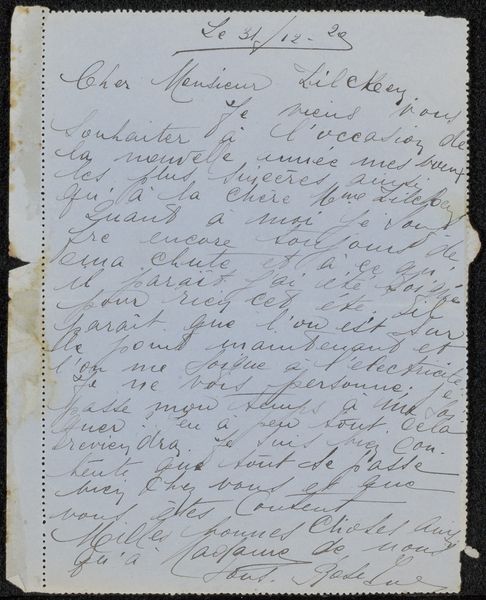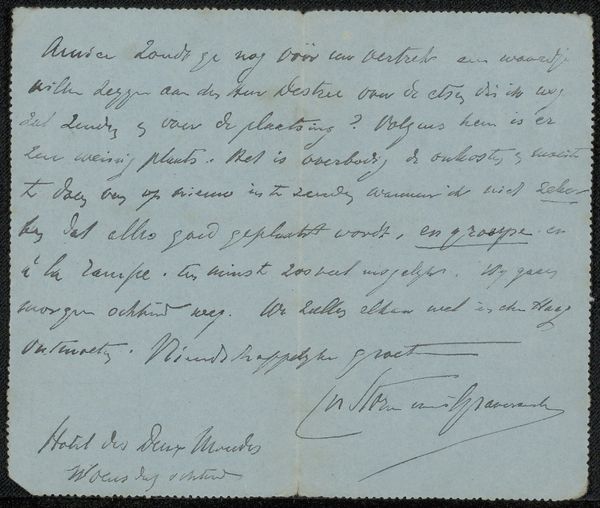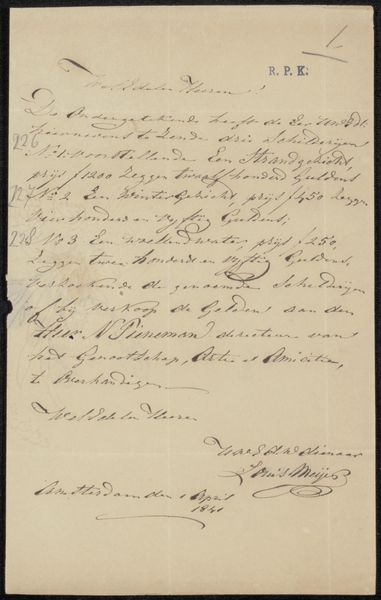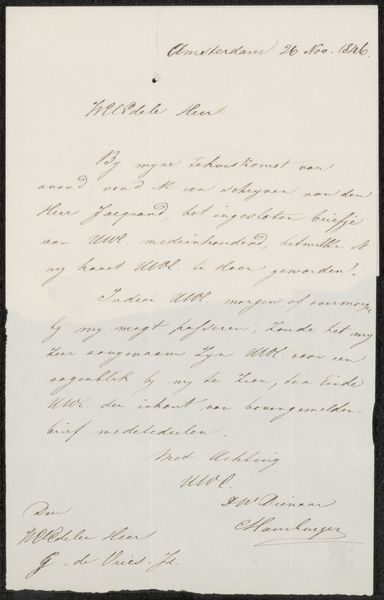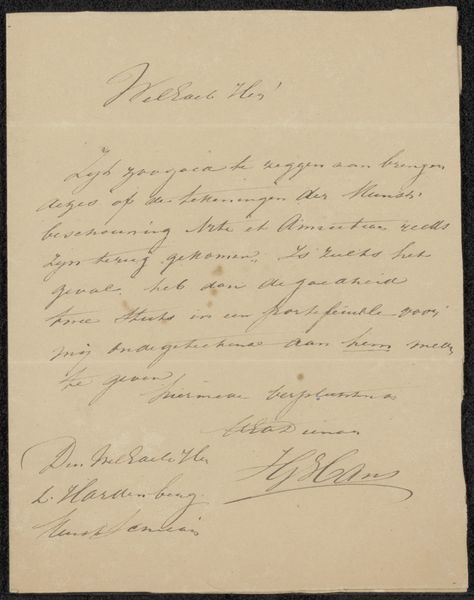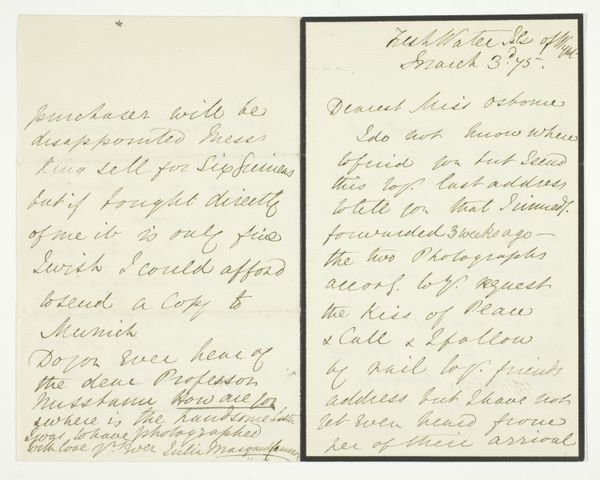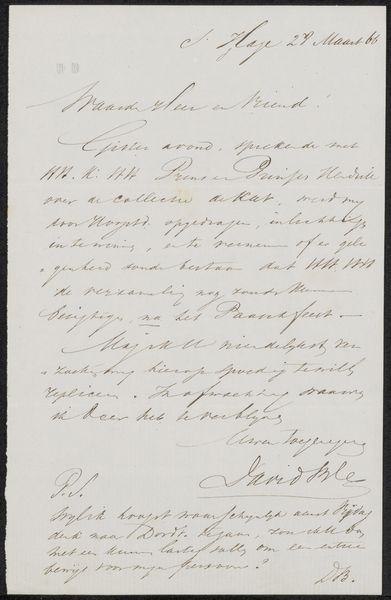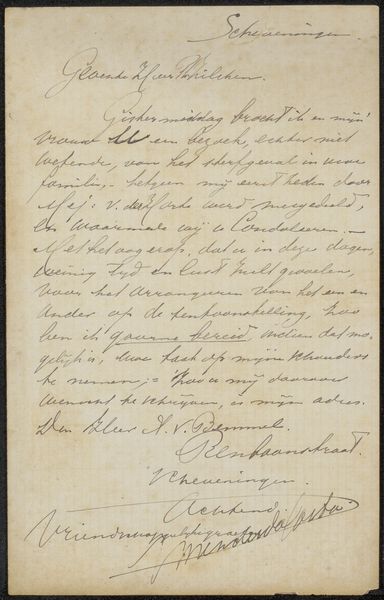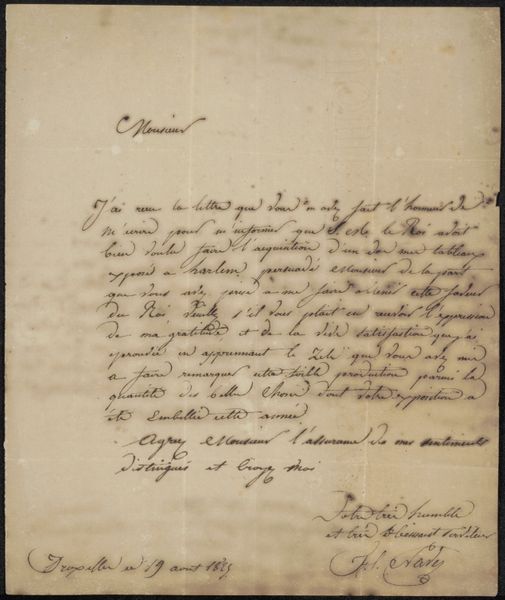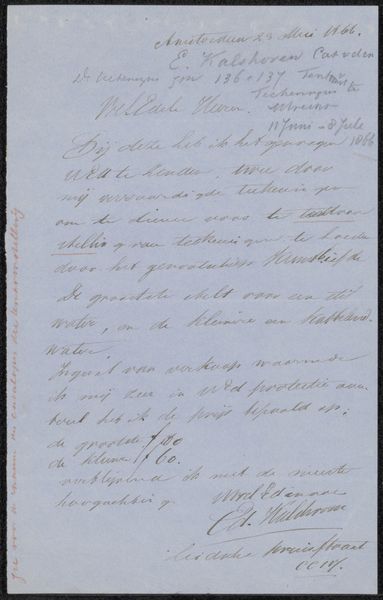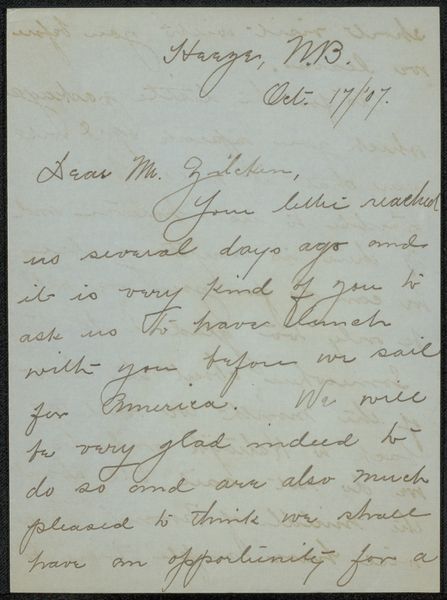
drawing, paper, ink
#
portrait
#
drawing
#
aged paper
#
homemade paper
#
ink paper printed
#
sketch book
#
hand drawn type
#
paper
#
personal sketchbook
#
ink
#
hand-drawn typeface
#
sketchbook drawing
#
storyboard and sketchbook work
#
sketchbook art
Copyright: Rijks Museum: Open Domain
Editor: Here we have "Brief aan Philip Zilcken," possibly from 1920-1922. It’s a drawing rendered in ink on paper, resembling a handwritten letter. The aged paper really strikes me; it adds so much to the piece. What’s your interpretation of this work? Curator: I’m particularly interested in the paper itself – its source, its preparation. Was this handmade paper, and what does that choice signify? Considering the labour involved, does it elevate the status of the written communication, positioning it between functional letter and art object? And what does the apparent aging or degradation of the paper contribute to our understanding of its historical and material existence? Editor: That’s a fascinating perspective. I was simply thinking of the aesthetic quality. But you’re making me consider the process behind its creation, which adds so much. Could the ink also tell us something about production and consumption at that time? Curator: Exactly. What kind of ink was used? Was it mass-produced or handcrafted? If the materials were difficult to acquire, or costly, how might this shape our interpretation of the piece's social context and the author's status? Editor: So you’re suggesting we should almost treat the materials as active agents in communicating meaning. Curator: Precisely. This letter ceases to be merely a carrier of text but becomes a confluence of material and labor practices – all hinting to consumption within a very particular time. It pushes against traditional hierarchies of art, foregrounding craft. Editor: This has completely changed my view of the piece. I’m not just seeing a letter anymore, but an object loaded with information about its production and its relationship to the world around it. Curator: Indeed, by investigating the material, we unearth richer meaning and open doors to better understanding.
Comments
No comments
Be the first to comment and join the conversation on the ultimate creative platform.
